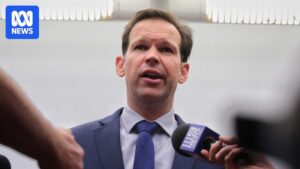
In a historic gathering, world leaders convened at the Global Climate Summit 2023 in Paris this week to address the escalating climate crisis. The summit, which began on Monday, brings together representatives from over 190 countries to negotiate and commit to actionable steps aimed at reducing carbon emissions and promoting sustainable practices worldwide.
The urgency of the summit is underscored by the latest report from the Intergovernmental Panel on Climate Change (IPCC), which warns that without immediate and significant action, global temperatures could rise by more than 1.5 degrees Celsius by 2050, leading to catastrophic environmental consequences.
Commitments and Challenges
During the opening sessions, several nations announced ambitious targets to cut greenhouse gas emissions. The United States pledged to reduce emissions by 50% from 2005 levels by 2030, while the European Union committed to a 55% reduction by the same year. China, the world’s largest emitter, promised to peak carbon emissions before 2030 and achieve carbon neutrality by 2060.
However, these pledges come with significant challenges. Developing countries have expressed concerns about the financial and technological support needed to transition to greener economies. India, for example, highlighted the need for more substantial funding from developed nations to meet its climate goals.
“Developing countries require not just promises but concrete financial assistance to implement sustainable practices,” said India’s Environment Minister, Bhupender Yadav.
Expert Opinions and Historical Context
Experts argue that the commitments made at the summit must be backed by robust policies and transparent monitoring to ensure accountability. Dr. Jane Goodall, a renowned environmentalist, emphasized the importance of integrating indigenous knowledge and practices into climate strategies.
“Indigenous communities have been stewards of the environment for centuries. Their insights are invaluable in crafting effective climate solutions,” Goodall stated.
Historically, international climate agreements have faced hurdles in implementation. The Kyoto Protocol, adopted in 1997, set binding targets for developed countries but was hampered by non-compliance and withdrawal by key nations. The Paris Agreement of 2015 marked a significant shift by including both developed and developing countries, yet critics argue that its voluntary nature limits its effectiveness.
Technological Innovations and Future Prospects
Amidst the discussions, technology has emerged as a beacon of hope. Innovations in renewable energy, carbon capture, and storage technologies are pivotal in achieving emission reduction targets. Companies like Tesla and Siemens are at the forefront of developing sustainable technologies that are both efficient and economically viable.
The summit also highlighted the role of youth activism in driving climate action. Young leaders like Greta Thunberg continue to hold governments accountable, urging them to translate words into deeds.
“The eyes of all future generations are upon you. If you choose to fail us, I say we will never forgive you,” Thunberg declared in a powerful address.
Looking forward, the success of the Global Climate Summit 2023 will depend on the ability of nations to collaborate and implement their commitments effectively. The establishment of a comprehensive framework for monitoring progress and sharing best practices will be crucial in this endeavor.
As the summit progresses, the world watches with bated breath, hoping that this gathering will mark a turning point in the fight against climate change. The decisions made here will shape the planet’s future, determining whether we can avert the most severe impacts of climate change and secure a sustainable future for generations to come.







